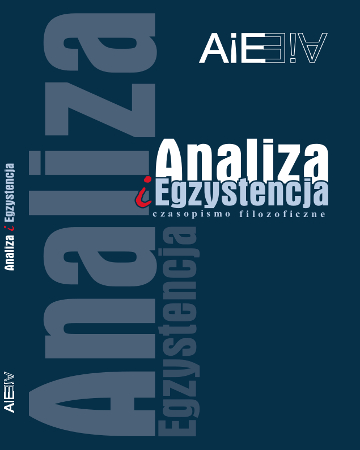
ISSN: 1734-9923
eISSN: 2300-7621
OAI
DOI: 10.18276/aie.2022.58-06





Issue archive /
58 (2022)
The Academia Electronica – Vision, Experiment, Future
| Authors: |
Michał
Ostrowicki

Uniwersytet Jagielloński |
| Keywords: | virtual world virtual community reality avatar open university |
| Data publikacji całości: | 2022 |
| Page range: | 14 (111-124) |
| Klasyfikacja JEL: | I21 |
Abstract
The paper shows the history of the Academia Electronica – a virtual department of the Jagiellonian University, which has been in operation since 2007 in Second Life 3D graphic environment. The contributor focused on the transformation it underwent and problems which have been addressed for 14 years. Three aspects of the analysis have been identified with the first one concerning the philosophy of virtuality, the second – teaching in the 3D graphic environment, and the third one revealing the social importance of an open university. This text is autobiographic, which means that it includes short memories on a number of events related to the development of the Academia Electronica as a university alongside the contributor’s personal reflections based on his long staying in the Second Life world.
Download file
Article file
Bibliography
| 1. | Alves, P., Miranda, L., Morais, C. (2017). The Influence of Virtual Learning Environments in Students’ Performance. Universal Journal of Educational Research, 5 (3), 517-527. DOI: http://dx.doi.org/10.13189/ujer.2017.050325 |
| 2. | Au, W. (2008). The Making of Second Life: Notes from the New World. New York: Harper Collins e-books. |
| 3. | Bell, D. (2001). Introduction to cyberculture. London and New York: Tylor and Francis Group, Routledge. |
| 4. | Branden J. (2004). Branden W. Joseph on Billy Klüver. Artforum International Magazine, Vol. 42 (no. 7), 39-42. |
| 5. | Chalmers, A., Zányi, E. (2009). Real Virtuality: emerging technology for virtually recreating reality. Becta – leading next generation learning, November. |
| 6. | Cubitt, S., Thomas, P. (2015). The New Materialism in Media. In: V. Catricalà (ed.), Media Art. Towards a New Definition of Arts in the Age of Technology (19-38). Italy: Fondazione Mondo Digitale. |
| 7. | Dolphijn, R., Tuin, I. (2012). New Materialism: Interviews & Cartographies. Ann Arbor: Open Humanities Press, University of Michigan Library. DOI: http://dx.doi.org/10.3998/ohp.11515701.0001.001 |
| 8. | Don, I. (1990). Technology and the Lifeworld. From Garden to Earth. Indiana University Press. |
| 9. | Drucker, J. (2009). Speclab. Digital Aesthetics and Projects in Speculative Computing. University of Chicago Press. |
| 10. | Figueroa Sarriera, H. (2006). Connecting the Selves: Computer-mediated Identification Processes. In: D. Silver, A. Massarini (eds.), Critical Cybercultures Studies (97-106). New York University Press. |
| 11. | Heim, M. (1993). Metaphysics of Virtual Reality. New York: Oxford University Press. |
| 12. | Heim, M. (1999). The Cyberspace Dialectic. In: P. Lunenfeld (ed.), The Digital Dialectic: New Essays on New Media (24-45). London: The MIT Press. |
| 13. | Yu-Ju, L. (2020). Immersion, interaction, and experience-oriented learning: Bringing virtual reality into FL learning. Language Learning & Technology, University of Hawaii National Foreign Language Resource Center Center for Language & Technology (co-sponsored by Center for Open Educational Resources and Language Learning, University of Texas at Austin), February, Volume 24 (1), 1–15. |
| 14. | LaValle, S. (2017). Virtual Reality. Cambridge: University of Illinois. |
| 15. | Lister, M., Kelly, K., Giddings, S., Dovey, J., Grant, I. (2008). New Media: a Critical Intoduction. Routledge, New York: Taylor & Francis e-Library. |
| 16. | Mann, S., Furness, T., Yuan, Y., Iorio, J., Wang, Z. (2018). All Reality: Virtual, Augmented, Mixed (X), Mediated (X,Y), and Multimediated Reality. Cornell University. |
| 17. | Michailidou, A., Economides A. (2003). Elearn: Towards a Collaborative Educational Virtual Environment. Journal of Information Technology Education, Informing Science Institute, Volume 2, 131-152. |
| 18. | Turkle, S. (1997). Life on the screen: Identity in the Age of Internet. New York: Touchstone, Simon & Schuster. |
| 19. | Wilkes, S. (2016). Communication Modality, Learning, and Second Life. In: B. Dalgarno, B. Tynan, S. Gregory, M. Lee (eds.), Learning in Virtual Worlds. Research and Applications (41-65). Athabasca University Press. |
| 20. | Varela, F., Rosch, E., E., Thompson. (1993). The Embodied Mind. Cognitive Science and Human Experience. Cambridge, Massachusetts: The MIT Press. DOI: https://doi.org/10.7551/mitpress/6730.001.0001 |
| 21. | Ventrella, J. (1995). Eukaryotic virtual reality: The emergent art of artificial life. Proceedings: 6th International Symposium on Electronica Art - ISEA (300-304). Montreal. Pobrane ze strony: http://www.ventrella.com/Alife/Eukaryotic.html |
| 22. | Westbrook, V. (2006). The virtual learning future. Teaching in Higher Education. Tylor and Francis Group, Routledge, Vol. 11, 471-482. DOI: https://doi.org/10.1080/13562510600874276 |
| 23. | Quaranta, D. (2013). Beyond New Media. Brescia: Link Editions. |
| 24. | Zielinski, S. (2011). …After the Media. News from the Slow-Fading Twentieth Century. Minneapolis: Univocal Publishing. |